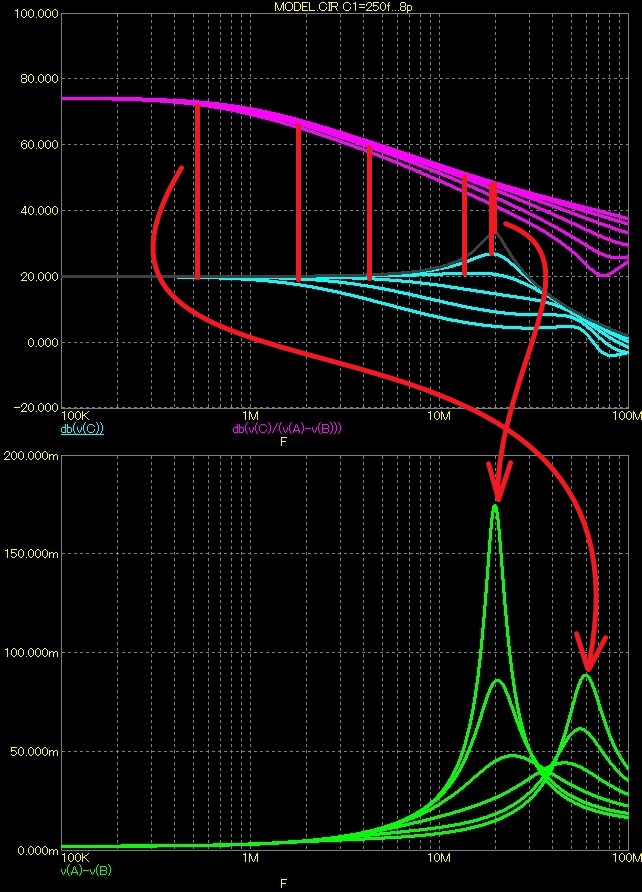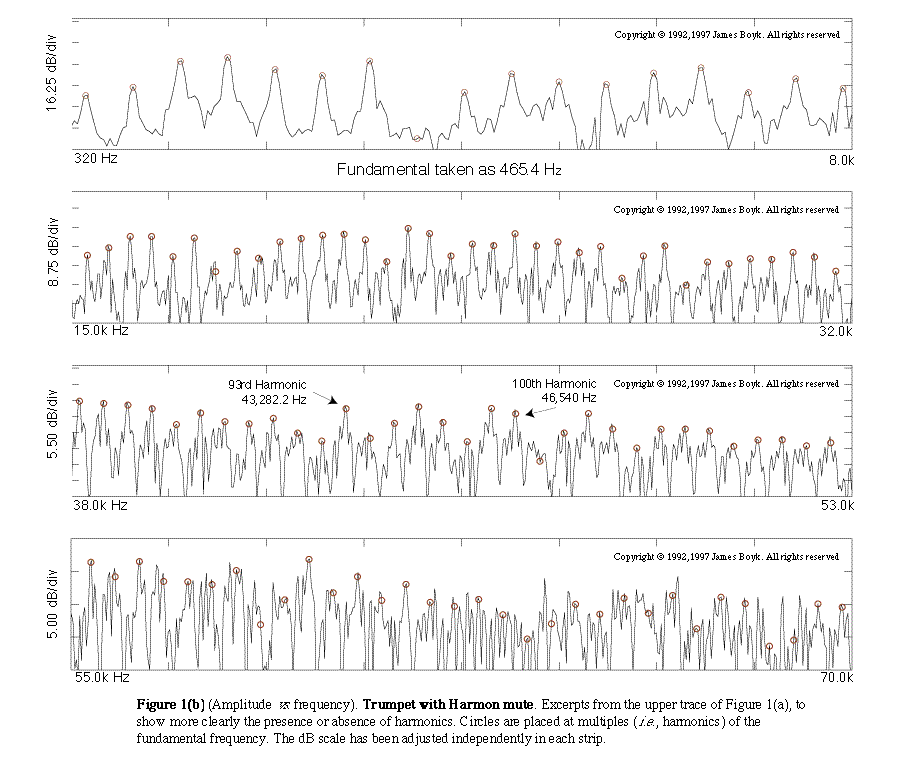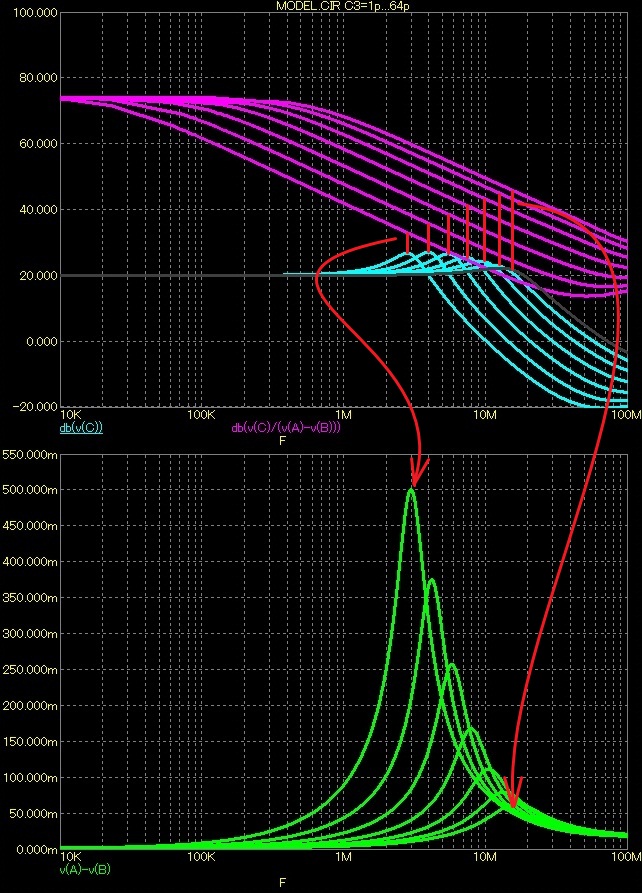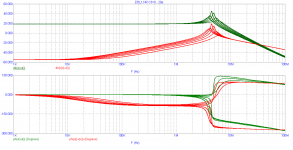Well this is in short what I think he is trying to say, if you put all the pieces together it reads something like this, In a feedback amplifier the output which is used as the feedback back to the input causes distortion because this signal is out of phase with the input. What he has found is that local feedback worsens the shift and thats what he was trying to show with that simple Self based circuit.
Well this is in short what I think he is trying to say, if you put all the pieces together it reads something like this, In a feedback amplifier the output which is used as the feedback back to the input causes distortion because this signal is out of phase with the input. What he has found is that local feedback worsens the shift and thats what he was trying to show with that simple Self based circuit.
Maybe. Except that phase shift in the feedback signal doesn't cause distortion. It causes less than full cancellation of the distortion, which was already present in the amp to begin with.
Local feedback has necessarily LESS phase shift so that would then mean LESS distortion if this reasoning was correct, which I think it isn't.
jd
phase shift in the feedback signal doesn't cause distortion. It causes less than full cancellation of the distortion, which was already present in the amp to begin with.
Local feedback has necessarily LESS phase shift so that would then mean LESS distortion if this reasoning was correct, which I think it isn't.
jd
Exactly.
He does permanently mix linear and nonlinear distortions. The problem shown here
http://www.diyaudio.com/forums/soli...lay-amplifiers-listening-characteristics.html
is caused only and only by limited slew rate, which represents a nonlinear distortion. Nothing in common with phase angle of the Vdiff.
BTW, in a dominant pole FB circuit with low OLG frequency, the Vdiff phase shift is 90 degrees over almost whole audioband. Can we read any distortion level from that??
Last edited:
Exactly.
He does permanently mix linear and nonlinear distortions. The problem shown here
http://www.diyaudio.com/forums/soli...lay-amplifiers-listening-characteristics.html
is caused only and only by limited slew rate, which represents a nonlinear distortion. Nothing in common with phase angle of the Vdiff.
BTW, in a dominant pole FB circuit with low OLG frequency, the Vdiff phase shift is 90 degrees over almost whole audioband. Can we read any distortion level from that??
Yes, clearly slew rate limiting. Can't read the horizontal scale, is it in uSecs?
jd
I just read all 200+ posts on this thread and I must say that it's all very confusing in an interesting way. My take on what Federmann is trying to say is that he thinks that measuring phase shift at 100kHz might be an indicator that an amp does not provide adequate audio performance in terms of listening experience, not because phase shift itself matters at that frequency but that too much phase shift is reflective of some other problem with the amp. I think that the 741 demo was to illustrate that, the phase shift being evidence for the actual problem: The 741's non-linear performance at the shown frequency.
If it were actually useful, phase shift at 100kHz would be an easy thing to measure when evaluating an amp, but unfortunately it would also be all too easy to 'fix' by including a filter at the amp input to shift the phase back at the 100kHz frequency. And it would give entirely invalid results on circuits that intentionally shift phase for what ever reason (perhaps as a side effect of an input low-pass RF filter).
If it were actually useful, phase shift at 100kHz would be an easy thing to measure when evaluating an amp, but unfortunately it would also be all too easy to 'fix' by including a filter at the amp input to shift the phase back at the 100kHz frequency. And it would give entirely invalid results on circuits that intentionally shift phase for what ever reason (perhaps as a side effect of an input low-pass RF filter).
Well this is in short what I think he is trying to say, if you put all the pieces together it reads something like this, In a feedback amplifier the output which is used as the feedback back to the input causes distortion because this signal is out of phase with the input. What he has found is that local feedback worsens the shift and thats what he was trying to show with that simple Self based circuit.
I just read all 200+ posts on this thread and I must say that it's all very confusing in an interesting way. My take on what Federmann is trying to say is that he thinks that measuring phase shift at 100kHz might be an indicator that an amp does not provide adequate audio performance in terms of listening experience, not because phase shift itself matters at that frequency but that too much phase shift is reflective of some other problem with the amp.
So yes it is. Must be evaluated only amp, no input or output filter.
I just read all 200+ posts on this thread and I must say that it's all very confusing in an interesting way. My take on what Federmann is trying to say is that he thinks that measuring phase shift at 100kHz might be an indicator that an amp does not provide adequate audio performance in terms of listening experience, not because phase shift itself matters at that frequency but that too much phase shift is reflective of some other problem with the amp. I think that the 741 demo was to illustrate that, the phase shift being evidence for the actual problem: The 741's non-linear performance at the shown frequency.
If it were actually useful, phase shift at 100kHz would be an easy thing to measure when evaluating an amp, but unfortunately it would also be all too easy to 'fix' by including a filter at the amp input to shift the phase back at the 100kHz frequency. And it would give entirely invalid results on circuits that intentionally shift phase for what ever reason (perhaps as a side effect of an input low-pass RF filter).
Could be. I must say the use of a 741 to show it is somewhat misleading; such bizar slew rate limiting is totally absent in a competently designed amp, for at least the last few decades. So, it may be a nice illustration of slew rate limiting but it has no bearing on well-designed amps.
I have no idea BTW how phase shift at some frequency can be an indicator of 'problems elsewhere in the amp'. Phase shift is a natural phenomenon, resulting from freq response roll-off and is present even in the best and most-appreciated amps. I don't think it is physically possible to design an amp without phaseshift; any practical circuit MUST at least be first order low pass and thus MUST have phase shift.
That being said, it would be good if Mr. Federmann could indicate what he thinks is the impact of phaseshift on sound quality? We may be overlooking something.
jd
it seems that federmann say that if we consider two signals,
there is mutual amplitude modulation..
if the amp is feeded with a signal that is :
Asin(wt) + Bsin(nwt) ,
then the amp will produce a signal that is :
G( Asin(wt) + Bsin(nwt)) + D((sin(wt) (sin(nwt))
the second part of the equation, the distorsion, can also be :
D(sin(wt)/sin(nwt)) or D(sin(nwt)/sin(wt))
or any combination of the three....
G is the amp gain, D is the ratio of mutual modulation...
of course, this is a simplfied view where the equation are
linearaly combined, but we can also have cross modulations that
implies the distorsions residuals themselves...
there is mutual amplitude modulation..
if the amp is feeded with a signal that is :
Asin(wt) + Bsin(nwt) ,
then the amp will produce a signal that is :
G( Asin(wt) + Bsin(nwt)) + D((sin(wt) (sin(nwt))
the second part of the equation, the distorsion, can also be :
D(sin(wt)/sin(nwt)) or D(sin(nwt)/sin(wt))
or any combination of the three....
G is the amp gain, D is the ratio of mutual modulation...
of course, this is a simplfied view where the equation are
linearaly combined, but we can also have cross modulations that
implies the distorsions residuals themselves...
it seems that federmann say that if we consider two signals,
there is mutual amplitude modulation..
if the amp is feeded with a signal that is :
Asin(wt) + Bsin(nwt) ,
then the amp will produce a signal that is :
G( Asin(wt) + Bsin(nwt)) + D((sin(wt) (sin(nwt))
the second part of the equation, the distorsion, can also be :
D(sin(wt)/sin(nwt)) or D(sin(nwt)/sin(wt))
or any combination of the three....
G is the amp gain, D is the ratio of mutual modulation...
of course, this is a simplfied view where the equation are
linearaly combined, but we can also have cross modulations that
implies the distorsions residuals themselves...
Modulation condition is that the input differential pair operates in the nonlinear region and the presence of higher harmonics.
Discarding of local feedback and plenty of profit in the open loop characteristics can be improved.


The second condition is the lack of profit margin, so large Vdif.
profit margin = loop gain
i suppose...
Discarding of local feedback and plenty of profit in the open loop characteristics can be improved.
i think you say that : reducing local feedback improve open loop gain
of the amp...
all this is correct, but it s known for a long time..
thank you for the graphs, pavel..
as i read on federmann site, his point is that it s pointless to
use fast devices that must be bandwith reduced to attain stability..
he says that rather than using a Cdom for local feedback, it s better
to use a slower device without compensation...
as an exemple, he describe leach amp classic compensation scheme..
he then goes on describing a polish amp that use a differential VAS that
is using caps of different values between each differential vas collectors to the
respective bases of this differential..
to end his point, he then describe a complementary differential using a nested
feedback loop for compensation, between the collectors of the two vas and
the collectors of the two first transistors of the differential.
the caps are in paralel with diodes, and there s also a damping RC circuit in each of the differential first transistors; connected to positive rail, as in a NE5532..
the diodes are used as variable capacitors..
he then compare the advantage of the different schemes in respect of the linearity
achieved by each compensation scheme..
i need to further read his sayings to understand what is the real point
he s turning around, if ever there is one, as it seems to me that he s re inventing
what has been theorized since the time of the valves...
anyway, he has great knowledge and intelligence..
at least this thread will allow him to improve his english, so in the future
we can have more constructive and less painfull ideas sharings..
as i read on federmann site, his point is that it s pointless to
use fast devices that must be bandwith reduced to attain stability..
he says that rather than using a Cdom for local feedback, it s better
to use a slower device without compensation...
as an exemple, he describe leach amp classic compensation scheme..
he then goes on describing a polish amp that use a differential VAS that
is using caps of different values between each differential vas collectors to the
respective bases of this differential..
to end his point, he then describe a complementary differential using a nested
feedback loop for compensation, between the collectors of the two vas and
the collectors of the two first transistors of the differential.
the caps are in paralel with diodes, and there s also a damping RC circuit in each of the differential first transistors; connected to positive rail, as in a NE5532..
the diodes are used as variable capacitors..
he then compare the advantage of the different schemes in respect of the linearity
achieved by each compensation scheme..
i need to further read his sayings to understand what is the real point
he s turning around, if ever there is one, as it seems to me that he s re inventing
what has been theorized since the time of the valves...
anyway, he has great knowledge and intelligence..
at least this thread will allow him to improve his english, so in the future
we can have more constructive and less painfull ideas sharings..
Wahab, you are right. I would rather encourage, rather than discourage his efforts. He appears to be on the right track, even if he doesn't yet know what he will find. I do recommend re-reading Barrie Gilbert's article on op amp FM distortion, and note the similar aspects of his calculations.
- Status
- Not open for further replies.
- Home
- Amplifiers
- Solid State
- Influence of the delay amplifiers for listening characteristics



